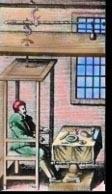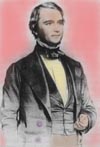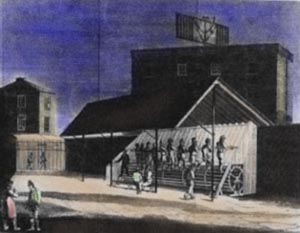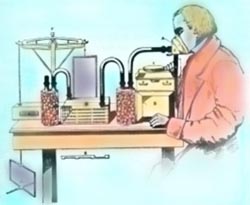Edward Smith (1819-1874)
Smith, a physician, public health advocate, and social reformer, advocated better living conditions for Britain's lower classes, including prisoners. He believed they were maltreated because they received no additional food while toiling on the exhausting "punitive treadmill." In 1863, the first government sponsored survey of food consumption in low income families, supervised by Smith, proved the inadequacy of their diet. Carpenter1 summarizes Smith's data: bread was the staple (19 lb or 9 kg per adult per week), followed by potatoes (2.4 lb; 1.1 kg), milk, (16 oz; 600 mL), meats (0.8 lb; 0.4 kg), sugar (0.5 lb; 0.2 kg), and fats (0.3 lb; 0.1 kg). A daily food intake of 2,200 kcal (9200 kJ) consisted of 370 g of carbohydrate, 53 g of fat, and 55 g of protein. Smith argued that prisoners consuming a diet consisting of 93% carbohydrate would become ill. Diet thus had social consequences. Disabled by weakness, prisoners would not be able to perform hard labor after release, and would more likely resort to crime. Smith had observed prisoners climbing up a treadwheel (forerunner of common treadmill), whose steps resembled the side paddle wheels of a Victorian steamship. Prisoners climbed for 15 minutes, after which they were allowed a 15-minute rest, for a total of four hours work three times a week. To overcome resistance from a sail on the prison roof attached to the treadmill, each man traveled the equivalent of 1.4 miles up a steep hill.
Curious about this strenuous exercise, Smith conducted studies on himself. He constructed a closed-circuit apparatus (face mask with inspiratory and expiratory valves) to measure carbon dioxide production while climbing at Brixton prison.1 He expired 20 more grams of carbon while climbing for 15 minutes and resting for 15 minutes than he expired while resting. Smith estimated that if he climbed and rested for 7.5 hours, his total daily carbon output would increase 66%. Smith analyzed the urine of 4 prisoners over a three week period, showing that urea output related to the nitrogen content of the ingested foods, while carbon dioxide related to intensity of exercise.2
Smith inspired two German researchers to validate the prevailing idea that protein alone powered muscular contraction. Adolf Eugen Fick (1829-1901), a physiologist at the University of Zurich, and Johannes Wislicenus (1835-1903), professor of chemistry at Zurich, questioned whether the oxidation of protein or of carbohydrates and fats supplied energy for muscular work. In 18643, they climbed Mt. Faulhorn in the Swiss Alps. Prior to the climb, they eliminated protein from their diet, reasoning that non-protein nutrients would have to supply them energy. They collected their urine three times: before and immediately after the ascent, and the following morning. They calculated the external energy equivalent of the 1,956-m climb by multiplying their body mass by the vertical distance. This external energy exceeded protein catabolism reflected by nitrogen in the urine. Therefore, they concluded that the energy from protein breakdown hardly contributed to exercise energy requirement ("... since the muscle-machine can undoubtedly be heated by means of the non-nitrogenous fuel, this fuel is in all cases that best suited for it." 3p. 502). Fick's brother-in-law, Edward Frankland (1825-1899)4, a London chemist trained in Germany, confirmed Fick and Wislicenus' conclusions about how protein fuels exercise. By measuring heat production during the complete oxidation of various foods and urea, Frankland proved that carbohydrate and fat, not protein, provided energy for the climb. Similar results were reported by German chemist M. Traube (1826-1894) whose 1861 paper cited by Guggenheim5 declared that muscle tissue did not provide the fuel for exercise, and that muscular force could not be assessed by urea production. Thus, the experiments by Smith, Fick and Wislicenus, Frankland, and Traube squashed Liebig's claim that protein served as the primary source of muscular power. © Frank I. Katch, William D. McArdle, Victor L. Katch. 1997. References 1. Carpenter, K. J.(1994). Protein and energy: a study of changing ideas in nutrition. Cambridge University Press, London. 2. McCollum, E. M. (1957). A history of nutrition. Houghton Mifflin Company, Boston, p.124. 3. Fick, A. and Wislicenus, J. (1866). On the origin of muscular power. Philosophical Magazine & Journal of Science London (4th ser., No. 212), 31, 485. 4. Brock, W. H. (1972). Dictionary of scientific biography, Vol. V. Scribners and Sons, New York NY, p. 124 5. Guggenheim, K. Y. (1981). Nutrition and nutritional diseases. Collamore Press, Lexington MA.
Edited by Will Hopkins. Webmastered
by Jason Nugent. Last updated 23 Nov 1997. |



